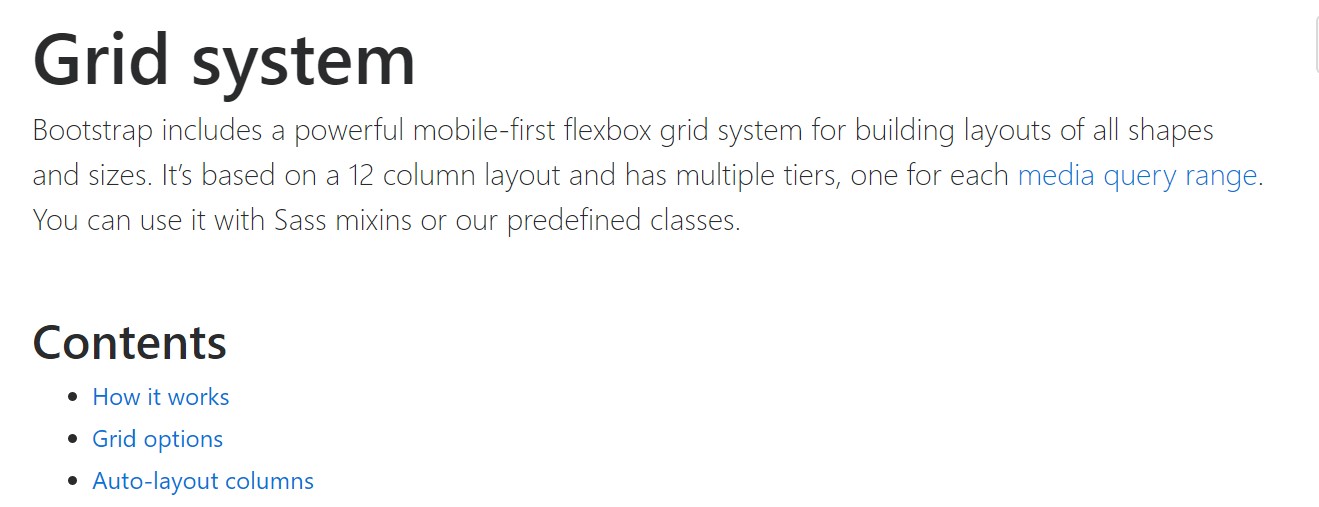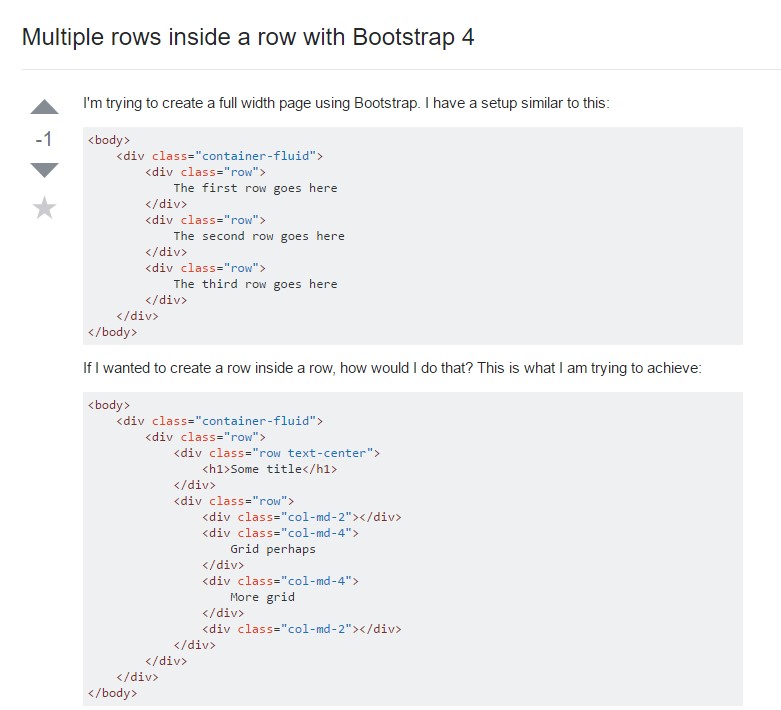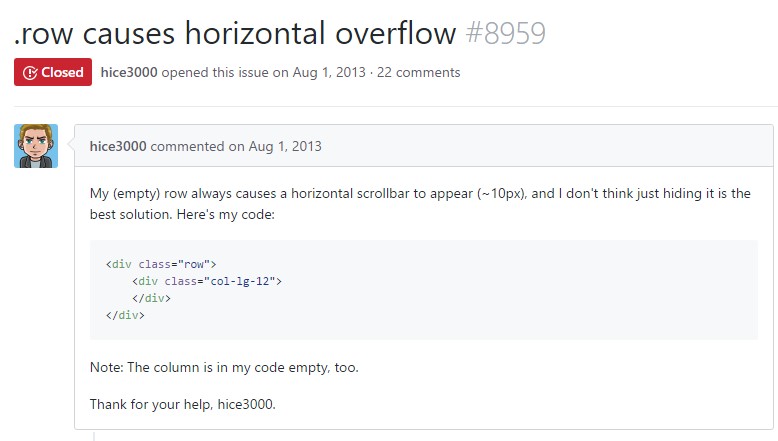Bootstrap Row Form
Overview
What do responsive frameworks perform-- they deliver us with a practical and working grid environment to place out the material, ensuring if we determine it correctly so it will operate and present appropriately on any type of gadget no matter the measurements of its display screen. And much like in the construction each framework featuring some of the most popular one in its own newest version-- the Bootstrap 4 framework-- involve just a few main components that set and mixed properly have the ability to assist you design practically any pleasing look to match your layout and sight.
In Bootstrap, in general, the grid structure becomes built by three fundamental elements that you have undoubtedly currently encountered around exploring the code of several pages-- these are the
.container.container-fluid.row.col-When you're fairly new to this whole entire thing and sometimes get to question which was the correct way these 3 has to be positioned inside your markup here is a simple trick-- all you ought to bear in mind is CRC-- this abbreviation comes with regards to Container-- Row-- Column. And since you'll shortly get used to watching the columns just as the innermost feature it's not differ likely you would definitely misjudgment what the very first and the last C indicates. ( visit this link)
Few words relating to the grid system in Bootstrap 4:
Bootstrap's grid mode works with a set of containers, rows, and columns to design and also align material. It's created by having flexbox and is fully responsive. Listed below is an example and an in-depth look at how the grid comes together.
The mentioned above situation makes three equal-width columns on small-sized, middle, big, and also extra large devices employing our predefined grid classes. All those columns are focused in the page having the parent
.containerHere's in what way it performs:
- Containers deliver a means to centralize your site's elements. Utilize
.container.container-fluid- Rows are horizontal groups of columns that assure your columns are actually arranged properly. We use the negative margin method on
.row- Web content should really be positioned within columns, also only columns may be immediate children of Bootstrap Row Table.
- Due to flexbox, grid columns free from a established width will by default layout using equal widths. For example, four instances of
.col-sm- Column classes indicate the quantity of columns you want to apply outside of the potential 12 per row. { In this way, supposing that you desire three equal-width columns, you may work with
.col-sm-4- Column
widths- Columns come with horizontal
paddingmarginpadding.no-gutters.row- There are five grid tiers, one for each responsive breakpoint: all breakpoints (extra little), little, normal, large size, and extra big.
- Grid tiers are built on minimal widths, meaning they put on that tier and all those above it (e.g.,
.col-sm-4- You can use predefined grid classes or else Sass mixins for more semantic markup.
Take note of the restrictions and also failures about flexbox, such as the incapability to use certain HTML elements as flex containers.
Though the Containers provide us fixed in max size or spreading from edge to edge straight space on display with slight useful paddings across and the columns deliver the means to delivering the screen space horizontally-- once again with some paddings around the factual material granting it a territory to inhale we're planning to aim our attention to the Bootstrap Row component and all the awesome solutions we can easily apply it for styling, fixing and distributing its elements using the clear new to alpha 6 flexbox utilities that are really some classes to put in to the
.row-sm--md-The best ways to put into action the Bootstrap Row Class:
Flexbox utilities can be utilized for setting up the disposition of the features put within a
.row.flex-row.flex-row-reverse.flex-column.flex-column-reverseHere is precisely how the grid tiers infixes get used-- for example to stack the
.row.flex-lg-column.flex-Along with the flexbox utilities applied to a
.row.justify-content-start.justify-content-end.justify-content-center.justify-content between.justify-content-aroundThis counts also to the upright location that in Bootstrap 4 flexbox utilities has been addressed just as
.align-.align-items-start.row.align-items-end.align-items-centerAn additional solutions are fixing the items by their base lines being lined up the class is
.align-items-baseline.align-items-stretchEach of the flexbox utilities discussed so far uphold independent grid tiers infixes-- fit them right before the last word of the related classes-- just like
.align-items-sm-stretch.justify-content-md-betweenConclusions
Here is actually exactly how this necessary however at first look not so adjustable component-- the
.rowInspect a number of video clip training about Bootstrap Row:
Linked topics:
Bootstrap 4 Grid system: main information

Multiple rows inside a row with Bootstrap 4

Another trouble: .row
causes horizontal overflow
.row
